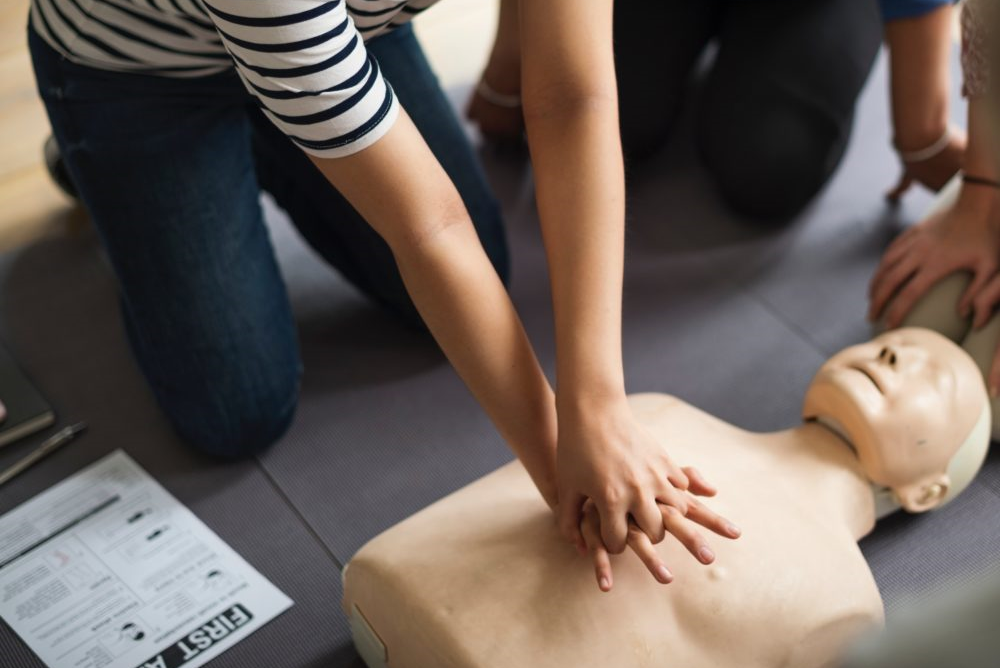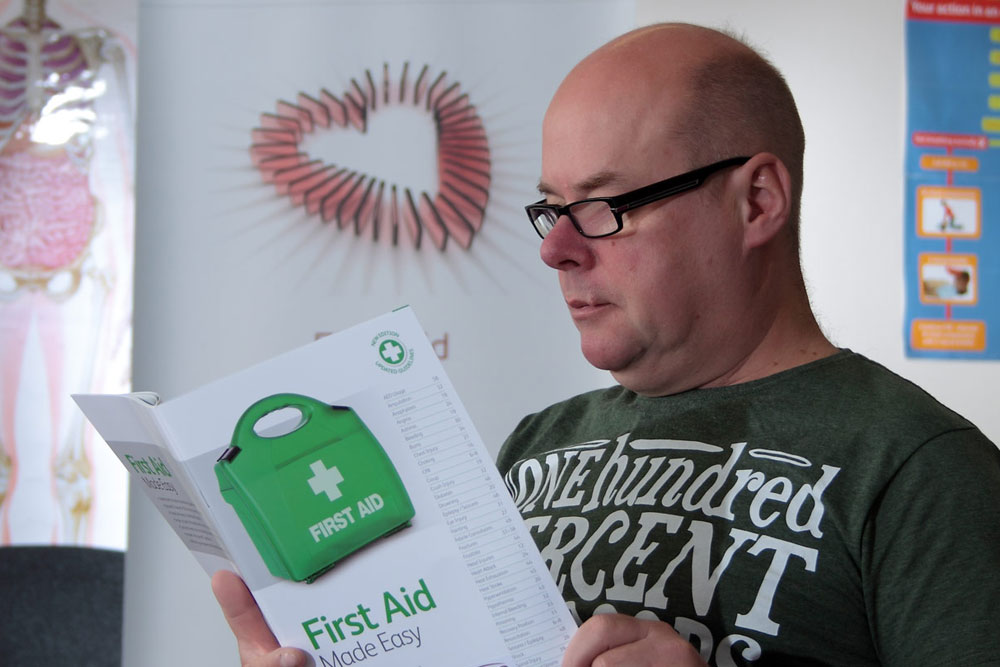-
01978 660 000
[email protected]

40 Years of Health and Safety
Over the last 40 years the UK has led the world when it comes to workplace health and safety. Since the Health and Safety at Work Act received Royal Assent in 1974 workplace fatalities have fallen by 85 percent and fatal injuries by over 75 percent.
HSE chair Judith Hackitt explains that “despite having diversified away from an economy based predominantly on heavy industry and manufacturing, much of the original framework and vision of the Health and Safety Act 1974 remains relevant”, and that “the principles have been applied time and again to new and emerging technologies and sectors.”
This reputation is something to be proud of; all workers have a right to work in places where health risks are properly controlled. Your employer is mostly responsible for health and safety, but you must help too. Want to know how you can help keep the UK safe at work? Here’s how…
For employers:
- Decide what could harm you in your job and the precautions to stop it.
- In a way you can understand, explain how risks will be controlled.
- Consult and work with you and health and safety representatives to protect people from harm in the workplace
- Provide health and safety training, free of charge
- Provide you with equipment and clothing, free of charge
- Provide drinking water, first-aid facilities, somewhere to wash, toilets
- Report major injuries and fatalities
- Have and clearly display an insurance certificate that covers you in case you get hurt at work or ill through work
For you:
- Follow the training provided
- Take reasonable care of your own and other people’s health and safety
- Cooperate with your employer on health and safety
- Tell someone if you think the work or inadequate precautions are putting people’s health and safety at risk
For more information, courses and health and safety equipment, please get in touch and speak to one of our health and safety professionals today.

Britain’s Good Samaritans
There is evidence to suggest that people are put off from volunteering, helping others or intervening in emergencies due to the fear of risk of liability. The Government believes that further legislation is needed to alleviate public concerns about this issue and to encourage participation.
The Social Action, Responsibility and Heroism Bill seeks to limit liability for negligence if the act was done in an attempt to assist another person. In a nutshell, it is to prevent an injured party claiming damages against a person who, in essence, means well and inadvertently injures someone while doing something ‘socially useful’. For example, a fireman rescuing someone from a burning building and inadvertently knocking over an innocent bystander in the process.
The Bill is intended to reassure people that if they show a generally responsible approach towards the safety of others, the courts will take this into account in the event they are sued for negligence. If passed as intended, judges are to be encouraged to take into account three new factors:
- Whether a person is working for ‘the good of society’
- Whether someone has acted in a ‘generally responsible way’
- Whether someone has acted ‘in an emergency’
This will help to support the Government’s broader aims of encouraging and enabling people to volunteer and to play a more active role in civil society.
But should people be afraid of liability in the first place? What’s wrong with acting on your instincts and helping those in need? The Bill has been criticised as ‘a solution in search of a problem’ as the government has not discovered one civil action in the last 10 years that would be decided differently under this proposed legislation.
However, the Bill is sure to send a strong signal to reassure people that the courts will consider the wider context of the defendant’s actions before reaching a conclusion on liability.

Risks Assessed
While most people are aware of the importance of risk assessments, many people can get confused when it comes to actually recording potential risks. In this short guide we will discuss the key components all risk assessments must include, as well as discussing the importance of tailoring risk assessments to suit your organisation.
What is a Risk Assessment?
According to the Health and Safety Executive (HSE) a risk assessment can be defined in the following way:
A risk assessment is simply a careful examination of what, in your work, could cause harm to people, so that you can weigh up whether you have taken enough precautions or should do more to prevent harm.
Regardless of the size of your organisation, you have a legal duty to undertake risk assessments in order to protect your workforce.
How to do an Assessment
To do an effective risk assessment you first need to understand the different elements in your business that might cause people harm. Once you have identified these elements and decided what actions you will put in place to reduce harm, you need to prioritise some appropriate and proportional control measures. The HSE suggest you begin by:
Identifying what can harm people in the workplace
Identifying who might be harmed and how
Evaluating the risks and deciding on the appropriate controls
Recording your risk assessment
Risk Assessment Template:
When it comes to risk assessments; one size does not fit all.
Organisations need to understand the importance of tailoring risk assessments; they need to ensure that every individual and activity is covered. At Atrium we can help organisations meet their legal requirements by carrying out assessments, for more information you should check out our services page.
Please remember that copying a risk assessment template from the web and putting your company name on it will not be enough to fulfil your legal requirement. Every business is unique and consequently faces a unique set of hazards, although there may sometimes be an overlap, it is best to call in a professional to help you with your assessment. Contact Atrium today!

Work Place Health and Safety – Are You Prepared?
If you’re a small business, Health and Safety will more often than not be the last thing on your mind but there will come a time when if you aren’t prepared, you may face a scramble to ensure you comply with Health and Safety law.
Adherence to basic Health and Safety laws is vital for any business, even small businesses, but in our experience a company will often try to fulfil their obligations in a hurry. This is particularly the case when start-ups begin to mature into fully fledged businesses. A growing company with 2 to 3 people can very quickly grow into a company employing 4, 5 and so on…
This is often the point where the owner will realise that he or she isn’t doesn’t have any form of health and safety policy. As an employer, the question you need to ask yourself is “what happens if an employee gets injured or is exposed to anything harmful?” however remote that prospect is.
The risk might only be theoretical, but it would cost your company a great deal of money to put right should it be found that you were liable for any oversights. This could very well undermine the whole foundation of your business in the process and invalidate any insurance you have in place.
So how do you fulfil health and safety requirements in a small business?
The first place to start is to appoint a competent person to deal with it, this can be yourself or an employee but ultimately as a small company owner the health and safety of your employees will be your responsibility.
Lots of guidance on this can be found on the HSE website or if you want to ensure that you are fully prepared for any eventuality, book yourself on a short enjoyable course with a health and safety training provider. They will advise you on everything you need to get your company health and safety procedures exactly right.
Call us today on 01978 660 000 for details or advice on health and safety issues for business.

First Aid – Would you know what to do in an Emergency?
Emergency situations where you might need to give someone Cardio Pulmonary Resuscitation (CPR) may not be something you’ll ever need to do, but what happens if that situation does arise? Are you prepared?
Being able to do CPR can in some cases mean the difference between life or death for someone suffering from a heart attack so it is definitely worth investing in the skills needed to provide it effectively. Whether it is due to time constraints or simply being to busy take part in a basic first aid course is likely to be something we leave for a time when we’re less busy.
But if you lack vital first aid skills would you know what to do if someone were to have a heart attack? People react in different ways to this kind of situation, some with blind panic and others who step in and take the vital actions needed to help save a person’s life.
This calm response to an emergency situation is usually down to some form of preparation. In order to react in the appropriate way, at the very least it is useful to know what to do and ideally to do it correctly. Taking a first aid course could be the best investment you have ever made whether the reasons are simply to develop your knowledge, should you be faced with an emergency or because you are parent of young children.
Whatever your reasons book a first aid course with us today and make sure you have the knowledge that could one day help you save someone’s life.

Health and Safety Training – Can You Afford to Ignore it?
Ignoring health and safety can cost your business serious money – so it really is worth making a small investment in training.
Every day businesses discover to their own cost that ignoring health and safety and putting off training your staff for another day is a false economy. Simply type ‘health and safety fines’ in Google and you will find an endless list of companies who ignore the risks placing employees and often themselves in danger.
The HSE has been busy clamping down on those who flout health and safety in Wales. As a result of one investigation, it was announced this month (April) that the owners of a Cardiff roofing company have been sentenced after repeatedly putting their workers at risk by ignoring urgent orders to improve safety.
The Health and Safety Executive (HSE) issued a Prohibition Notice after finding employees were being put at risk of a potentially fatal fall from height. Three workers were spotted replacing tiles on a sloping roof near an unprotected gable end of a three-storey building at Thornhill Court in Cardiff on 5 August 2010.
Cardiff Magistrates Court heard the employees were working between eight and ten metres above the ground. A visiting HSE inspector issued the notice ordering work to stop immediately until safety barriers were put in place on the roof. The owner of the company pleaded guilty to breaching Regulation 6(3) of the Work at Height Regulations 2005, fined £5,985 and ordered to pay costs of £1,800.
This could have been a lot worse, according to the HSE, falls from height are the single biggest cause of fatalities in the construction industry.
So is it really worth risking a fine or worse? Call us on 01978 660 000 to book your health and safety course in Wrexham today.

